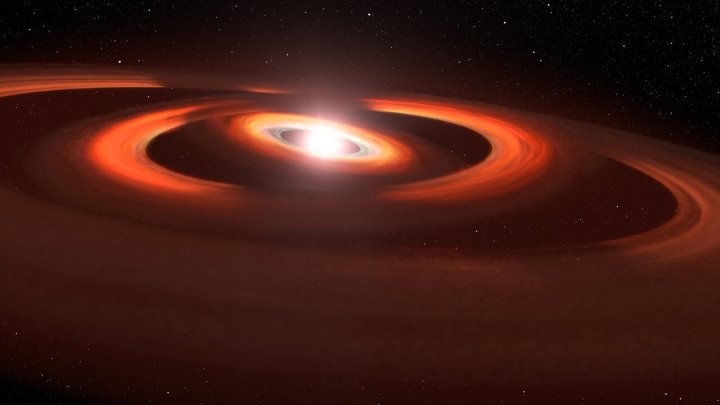Planets form from large disks of dust and gas that collect around their host stars. Billions of years ago, our solar system would have looked like a single point of bright light coming from the sun, with a disk of matter swirling around it that eventually clumped into planets. To learn about how our solar system formed, it’s helpful to look at other systems that are currently going through this process — such as TW Hydrae, a system located 200 light-years away and turned face-on toward us, making it the perfect place to observe planetary formation.
But there’s something odd about the TW Hydrae system. In 2017, astronomers first noticed a strange shadow that was visible on the disk of dust and gas surrounding the star. While such shadows are typically from a planet formed within the disk, in this case the shadow’s shape and movement suggested it was actually from a second disk, located within the first disk and tilted at a different angle. Now, astronomers think they have spotted evidence of a third disk, with all three stacked up and creating a complex pattern of shadows.

Researchers used data from the Hubble Space Telescope collected in 2021 to observe the system, finding that the shadow was different from what they expected based on the theory of one disk casting a shadow on a second disk.
“We found out that the shadow had done something completely different,” said lead research John Debes of the Space Telescope Science Institute in a statement. “When I first looked at the data, I thought something had gone wrong with the observation because it wasn’t what I was expecting. I was flummoxed at first, and all my collaborators were like: What is going on? We really had to scratch our heads and it took us a while to actually figure out an explanation.”
They figured out that the most likely explanation for the observations is two misaligned disks within a third, larger disk. That’s a very odd setup for a planetary system. “We’ve never really seen this before on a protoplanetary disc,” said Debes. “It makes the system much more complex than we originally thought.”
It could be that there are already planets formed within each of the disks, which is what is causing the shadows. To learn more, one possibility is to use the powerful infrared vision of the James Webb Space Telescope to observe the shadows in more detail.
The research is published in The Astrophysical Journal.
Editors’ Recommendations
Services Marketplace – Listings, Bookings & Reviews